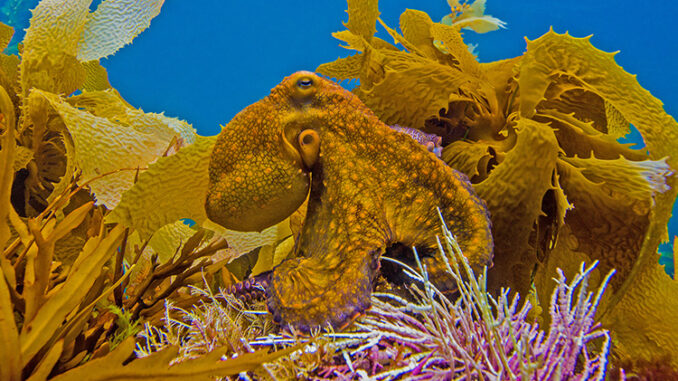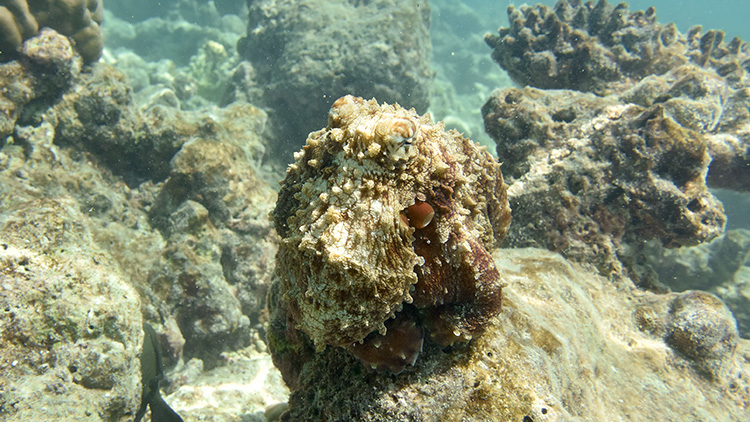
Octopuses are found in oceans worldwide. They live in shallow and deep water. The only hard part of their body is their beak. They use their beaks to crack open crabs and clams for lunch. Octopuses have soft bodies. How do they protect themselves from predators (animals that hunt other animals)? They have some tricks.
They are good at camouflage (the ability to blend in with the environment). They can change color and texture. They can also change shape.
Octopuses have special organs, called chromatophores. These organs allow them to change color quickly. The organs contain small sacs of different-colored pigments. Colors include red, yellow, and brown. The sacs get larger or smaller to show more or less color. This helps the octopus match the background.
Octopuses can change the texture of their skin. They match the texture of a rock or coral. They have small bumps on their skin that they can make larger or smaller to help blend in.

Camouflage is not the only way octopuses try to fool predators. They also copy the shape of other marine animals. They copy the shape of lionfish and sea snakes. Predators stay away from these animals.
What if these disguises are not enough? Octopuses can still get away quickly. They release a cloud of dark ink. This makes it hard for a predator to see. The octopus takes advantage of this moment. It takes in water and expels it through a siphon (a small tube that is narrower at one end than the other), blasting away at speeds of up to 25 mph!
What Can You Do? What other animals are good at blending in with their environment?
Photo Credit: (t)Douglas Klug/Getty Images, (b)Eugenieart/Shutterstock



